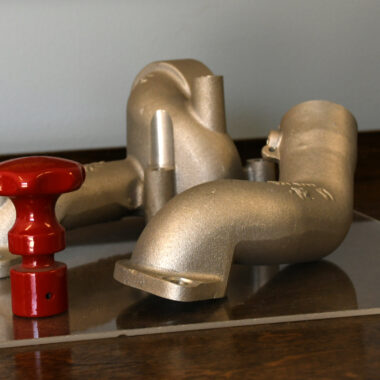Raise Your Production Line: Aluminum Casting Strategies That Supply Results
Raise Your Production Line: Aluminum Casting Strategies That Supply Results
Blog Article
Study the World of Aluminum Casting: Understanding the Different Techniques
Aluminum casting is an essential procedure in the production industry, with different techniques utilized to develop precise and detailed parts. Comprehending the different strategies used in light weight aluminum casting can offer beneficial insights right into the abilities and constraints of each approach. From the typical sand casting approach to the innovative die spreading process, each approach supplies one-of-a-kind advantages relying on the demands of the task. Checking out these diverse techniques can use a detailed sight of the opportunities within the world of aluminum casting and how each technique adds to forming the modern production landscape.
Sand Spreading Approach
Sand spreading, a widely-used approach in light weight aluminum casting processes, involves producing molds constructed from compressed sand for putting molten metal. This method is cost-effective and very flexible, making it a preferred choice for numerous markets. The procedure begins with the production of a pattern, typically made from wood or metal, which is then pressed into the sand to leave a perception. The sand combination, typically silica sand mixed with a binder like clay, is securely packed around the pattern to create a mold dental caries. Once the mold and mildew prepares, it is safely placed in a flask and molten aluminum is poured right into the dental caries.
After the steel has cooled and strengthened, the sand mold is broken away to reveal the aluminum spreading. Sand spreading permits for the manufacturing of complex forms and large parts that may be challenging or expensive to produce using various other techniques. It is additionally a sustainable strategy as the sand can be reused and utilized numerous times, lowering waste in the casting procedure.
Irreversible Mold And Mildew Technique

One considerable benefit of the Irreversible Mold And Mildew Method is the enhanced dimensional accuracy it uses. The steel mold and mildew permits tighter tolerances and finer details in the last light weight aluminum spreadings contrasted to sand casting approaches. This accuracy makes it a favored option for applications where limited dimensional control is essential, such as in the aerospace and auto sectors.

Pass Away Casting Process

Financial Investment Casting Strategy
Using a precision spreading technique, Investment Casting Strategy includes creating detailed aluminum components by putting molten steel into a ceramic mold and mildew. This process, also recognized as lost-wax casting, starts with the development of a wax pattern of the wanted component (aluminum casting).
Investment casting is frequently used for producing elements in sectors where tight tolerances and complex layouts are called for, such as aerospace, automobile, and clinical tools. The versatility and precision of the Investment Casting Technique make it a beneficial technique in the world of aluminum casting.
Lost Foam Casting Technique
Having actually discovered the helpful hints detailed precision of Investment Casting Approach, the focus now moves to the ingenious technique of Lost Foam Spreading in light weight aluminum element production. Lost Foam Spreading, likewise referred to as evaporative pattern spreading, is a contemporary method where a foam pattern of the wanted component is produced and after that covered with a refractory material. The covered foam pattern is then buried try this in sand, and molten aluminum is put right into the mold. As the steel fills the mold and mildew, the foam vaporizes as a result of the warmth, leaving a tidy cavity in the shape of the desired component.
Furthermore, Lost Foam Casting is an economical process as it lowers the requirement for cores and permits for the production of light-weight components. In spite of its benefits, Lost Foam Casting needs careful control of the casting procedure to make sure and prevent flaws top quality parts.
Final Thought
In final thought, light weight aluminum spreading offers a range of approaches such as sand casting, long-term mold strategy, die casting, financial investment spreading, and lost foam casting. Each technique has its very own advantages and applications, making aluminum casting a flexible and extensively used process in numerous sectors. Understanding the differences between these techniques is crucial in picking one of the most suitable casting technique for particular manufacturing demands.
Sand spreading, a widely-used method in aluminum casting processes, includes producing molds made of compacted sand for putting liquified steel. aluminum casting.The Irreversible Mold And Mildew Strategy, like sand spreading, is one more prevalent method used in aluminum spreading procedures, offering distinct advantages in terms of mold and mildew reusability and dimensional precision. The steel mold allows for tighter tolerances and better information in the last light weight aluminum spreadings contrasted to sand spreading techniques. The 2 primary types of die casting are chilly chamber die casting and hot chamber pass away spreading, each ideal for various types of aluminum alloys.In conclusion, light weight aluminum spreading uses a range of methods such as sand casting, permanent mold and mildew strategy, pass away casting, investment spreading, and lost foam spreading
Report this page